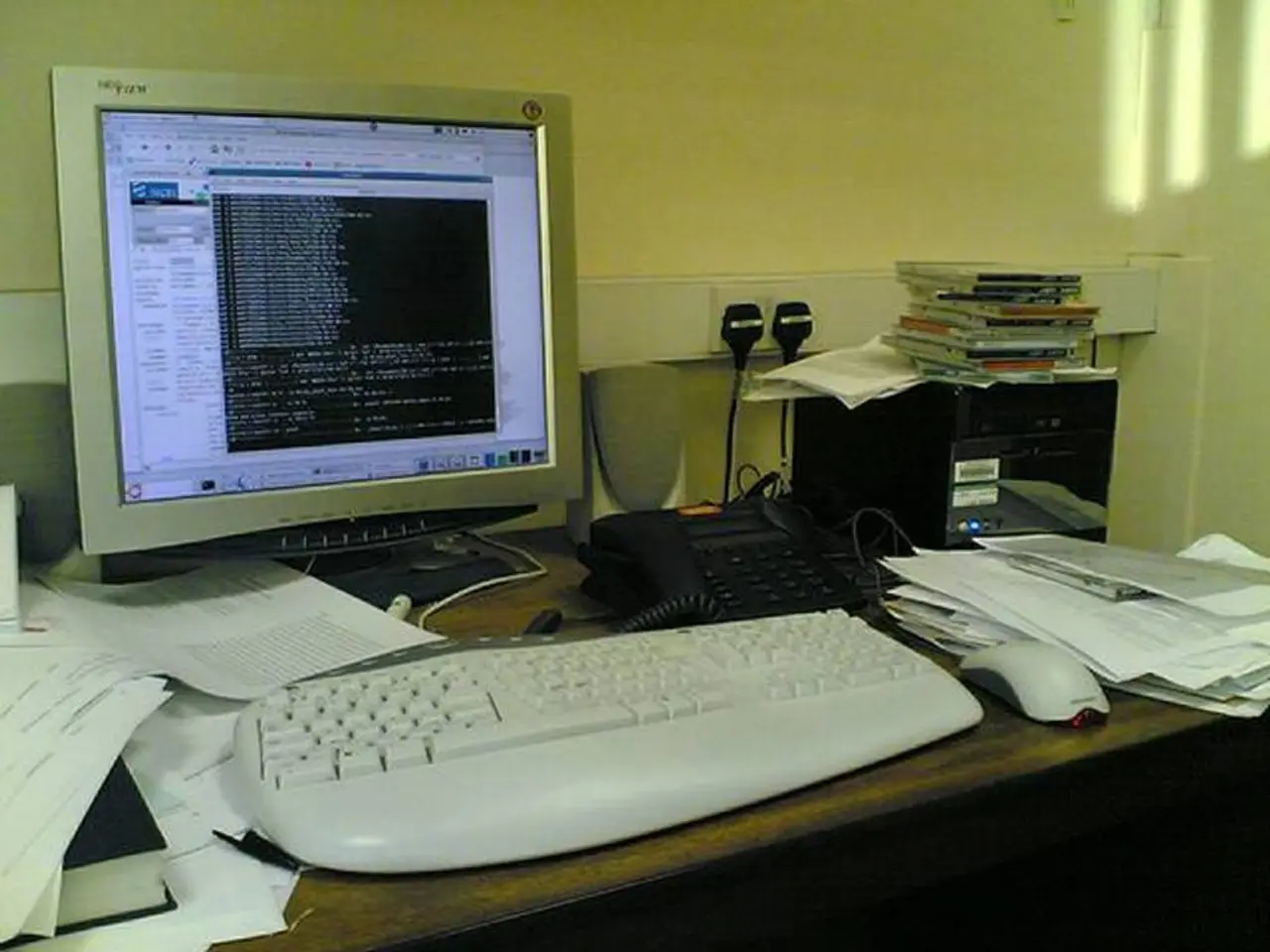Switching between tasks, or context switching, and its impact on productivity reduction.
In the modern work environment, managing time effectively is crucial for productivity. One of the key challenges faced by many workers is the frequent task switching, which can significantly impact focus and efficiency. Here are some strategies that can help minimize context switching and support sustained focus.
Firstly, understanding the patterns of context switches is essential. This involves recognising when one tends to switch during tasks disliked or during social media breaks. Identifying these patterns is the first step in reducing them [1].
The next step is deciding when to focus on specific tasks, based on understanding the context switch patterns affecting one's work. Time blocking is a method that can help with this, where the day is divided into sections or "time blocks" for specific tasks [2].
Computer scientist and psychologist Gerald Weinberg's research concluded that each added task consumes as much as 20% to 80% of a person's productivity [3]. Therefore, it's important to protect blocks of uninterrupted work time by scheduling focused work periods, reducing ad-hoc meetings, and turning off or limiting non-urgent notifications [1][3].
Consolidating and streamlining digital tools can also reduce distractions. By reducing the number of platforms used and establishing communication norms, distractions can be reduced by up to 30% [3].
Managers play a crucial role in reducing context switching. They can shield employees from distractions by modeling focus behaviours, avoiding last-minute requests, and encouraging prioritization during meetings [3]. Employees can also set clear boundaries with colleagues using tools like calendar blocks, auto-replies indicating "deep work," and encouraging "no interruptions" periods [3].
Prioritizing tasks is another essential aspect of productivity. Important tasks should receive top priority and be placed at the top of the to-do list [4]. Companies may also implement communication policies that respect focus periods, clarifying that employees should only respond to requests and messages when they have the time and aren't in "deep work" mode [4].
Incorporating scheduled breaks is also important to prevent mental fatigue and sustain focus throughout the day [2][5]. In remote or hybrid environments, using environmental cues to separate work and personal time can help reduce mental context switching [4].
The Pomodoro technique is a time-blocking method that involves 25-minute work periods followed by short breaks [2]. Using tools like Hubstaff's time tracker can help change routines and develop more productive habits, reducing issues with context switching [6].
Task batching, which involves grouping similar work together to focus within the same context, can also reduce the need for context switching [7]. The term "context switching" refers to our tendency to switch to different "mental control settings" whenever we remove our attention from one task and redirect it to another [8].
In conclusion, adopting the right strategies can increase efficiency and reduce the time required to complete various tasks, leading to a healthier work-life balance [4][5][6]. Together, these strategies create a work environment that minimizes frequent task switching and supports sustained focus, improving productivity and reducing cognitive strain [1][2][3][4][5].
- To further support sustained focus and reduce cognitive strain, using productivity tools like Hubstaff's time tracker can assist in changing work routines and cultivating even more effective habits [6].
- For those interested in education and self-development, delving into comprehensive guides on workplace wellness, health and wellness, personal growth, and productivity can offer valuable insights [4].
- Science reveals that our tendency to switch between tasks, or 'context switching,' consumes a significant portion of our productivity. Effective time management and task planning can help combat this issue [8].
- By applying strategies such as time blocking, task batching, eliminating digital distractions, and prioritizing tasks, the work environment becomes conducive to productivity and minimizes context switching, resulting in improved focus and efficiency [1][2][3][4][5].




